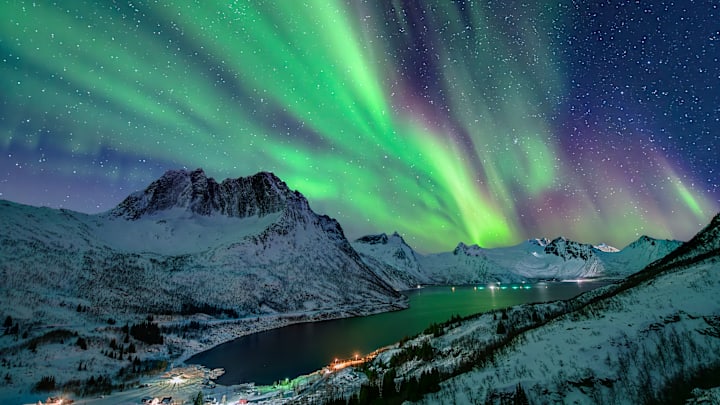Over the centuries, many have gazed up at one of the Earth’s most fascinatingly beautiful natural wonders: the northern lights. On November 11, 2025, lucky American stargazers—some even as far south as Alabama and Florida—got the chance to see them from their very own backyards. And according to CNN, the night sky could very well put on another dazzling, colorful show on November 12.
- Early Theories to Explain the Northern Lights
- What Actually Causes the Northern Lights
- When and How to See the Northern Lights
Early Theories to Explain the Northern Lights
Before science was able to get a read on what exactly was happening in the night sky, ancient people had their own theories for what caused the jaw-dropping light show. Many early beliefs had roots in religion, such as that the light was a pathway souls traveled to reach heaven or that the light was an eternal battle of dead warriors.

Early researchers were a bit more reasonable in their approximations, and most surrounded the idea of the reflection of sunlight off the ice caps. In 1619, Galileo Galilei named the lights the aurora borealis after Aurora, the Roman goddess of morning, after concluding they were a product of sunlight reflecting from the atmosphere.
You May Also Like ...
- The 10 Most Affordable Places to See the Northern Lights
- Listen to the Mysterious Sound of the Northern Lights
- 12 Stunning Facts About Solar Storms
Add Mental Floss as a preferred news source!
What Actually Causes the Northern Lights
Geomagnetic storms are responsible for the breathtaking nighttime display of dancing colors. Scientists have come to the general agreement that the lights are caused by the collision of electrically charged solar particles and atoms from our atmosphere. The energy from the collisions is released as light, and the reason it happens around the poles is because that's where the Earth’s magnetic field is the strongest.

In 2008, a team at UCLA concluded that “when two magnetic field lines come close together due to the storage of energy from the sun, a critical limit is reached and the magnetic field lines reconnect, causing magnetic energy to be transformed into kinetic energy and heat. Energy is released, and the plasma is accelerated, producing accelerated electrons.”
“Our data show clearly and for the first time that magnetic reconnection is the trigger,” said Vassilis Angelopoulos, a UCLA professor of Earth and Space Sciences. “Reconnection results in a slingshot acceleration of waves and plasma along magnetic field lines, lighting up the aurora underneath even before the near-Earth space has had a chance to respond. We are providing the evidence that this is happening.”
When and How to See the Northern Lights
The best time to see the northern lights is during the winter, due to the Earth’s position in relation to the sun (shorter days means darker night skies). And by the way, it’s not just the North Pole that puts on a show—there are southern lights, too. There are also aurora borealis on other planets.

Haven’t seen them yet? Traditionally, the best places to catch a glimpse of the northern lights are in Iceland, Sweden, Norway, Finland, Greenland, northern Canada, and Alaska. Maybe you’ll get lucky this week and sneak a peek from your very own window. Check out NASA’s aurora forecast for regular updates on where they could be showing.
And pro tip: Make sure you have your iPhone handy. Photos taken in “night mode” can reveal spectacular colors not visible to the naked eye.
A version of this story originally ran in 2017; it has been updated for 2025.
